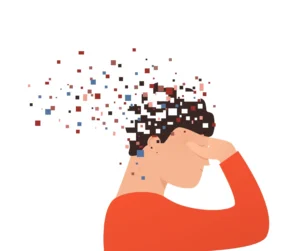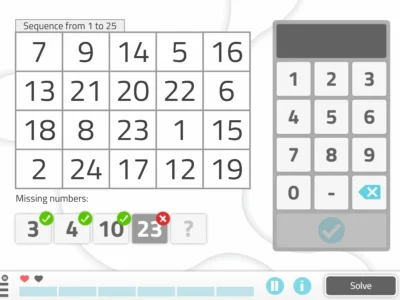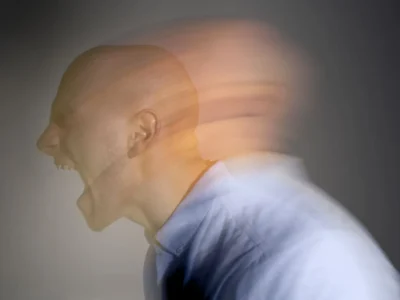Beth Rush explains in this article what traumatic brain injury is, the types, levels of severity, and how to perform assessment and treatment.
A traumatic brain injury is any type of injury to the brain, scalp, or skull. Traumatic brain injuries are a leading cause of death and disability in adults. Each year, around 1.5 million Americans suffer a traumatic brain injury, with an estimated mortality rate of 3%.
Types of Traumatic Brain Injury
Traumatic brain injuries can be divided into two main types: closed and penetrating.
Closed head injury
A closed head injury is any trauma to the head that does not penetrate the skull. Injuries can range from minor wounds to devastating, potentially fatal severe injuries, with lifelong physical, cognitive, or psychological sequelae.
Closed traumatic brain injuries are the leading cause of death in children under 4 years old and the leading cause of physical disability and cognitive impairment in young people.
They can cause skull fractures as well as considerable damage to the brain. It can take the form of a hematoma, concussion, or cause an intracranial hemorrhage.
Treatment depends on the injury and its severity. There are different types of treatment options for those who have suffered a closed head injury, such as cognitive rehabilitation, patient education, and pharmacotherapy. Mild injuries do not require treatment.
Penetrating head injury
A penetrating head injury occurs when an incident causes a foreign object to lodge in or pass through the head. Care plans for this type have two phases. You must monitor intracranial pressure (ICP) and blood pressure and stabilize the head and spine, in addition to any other monitoring required for a closed head injury.
In addition, the penetrating object will need to be removed and the wound debrided and irrigated. If the foreign object is near a major vascular structure, angiography should be performed to assess the risk of vascular injury before removing it. Then debride and irrigate to help prevent infection. Penetrating head injuries are extremely susceptible to infections, as objects are often carriers of germs and dirt, so proper wound care is essential.
Severity levels of traumatic brain injuries
Mild traumatic brain injury
Mild traumatic brain injuries are further divided into low-risk or moderate-risk mild traumatic brain injuries. Most mild TBIs are initially treated as low risk. However, if symptoms progress in severity or duration, it becomes a moderate-risk mild TBI and requires different care.
Low-risk mild traumatic brain injury
Common side effects of low-risk mild traumatic brain injuries are nausea, headaches, and dizziness. Generally, these patients will not need any imaging diagnostics and can be discharged after minimal observation if they have someone at home who can routinely monitor them. Send them home with a detailed care plan and signs to watch for.
Concussions are the most common cause of mild traumatic brain injury symptoms, so it is important to assess your patient accordingly. You will classify the severity of the concussion from level I to level V.
- Level I: mild confusion, but no memory changes.
- Level II: anterograde amnesia for less than five minutes and confusion.
- Level III: the previous level’s symptoms plus retrograde amnesia and loss of consciousness for less than five minutes.
- Level IV: loss of consciousness lasts between five and ten minutes.
- Level V: loss of consciousness greater than 10 minutes.
Moderate-risk mild traumatic brain injury
Patients who experience extreme or prolonged nausea, severe headache and dizziness, loss of consciousness, anterograde amnesia, or signs of intoxication should be moved to the moderate-risk TBI category.
They require imaging tests, such as a CT scan, and at least eight hours of observation. For discharge to be authorized, the patient must have a positive scan result, test negative for alcohol, and complete the observation hours without problems.
In most mild TBIs, symptoms improve within one to two weeks. If the condition persists after two months, but without new or worsening symptoms, your patient may have a post-concussion syndrome (PCS).
The persistence of symptoms can greatly impair daily life. After a concussion, patients have between a 5% and 30% chance of developing PCS. Although this condition can be quite disabling, you can reassure patients by telling them that, generally, symptoms will resolve over time.
Moderate to severe traumatic brain injury
Moderate to severe TBIs are characterized by a GCS score of 12 or less. Patients with a more severe TBI may have symptoms similar to a mild TBI, but may also experience:
- Severe or worsening nausea, vomiting, or headache,.
- dilated pupils,
- difficulty speaking,
- weakness or numbness in arms or legs,
- not waking up from sleep,
- loss of coordination,
- mood changes or irritability.
The priority in a TBI of this type is to prevent further injury or secondary damage. It may be necessary to stabilize the head and spine. You should also monitor blood pressure, intracranial pressure, and blood and oxygen flow to the brain.
Work first to control all these factors and stabilize the patient as much as possible. During this process, assess the patient for other injuries and bodily harm, as a traumatic brain injury rarely occurs in isolation.
Evaluation of traumatic brain injuries
Rapid evaluation is essential for all traumatic brain injuries. Without immediate care, the situation can deteriorate quickly. Assessment by questioning, the Glasgow Coma Scale (GCS) and imaging should be the first steps in any head injury.
Questions
Begin your assessment by asking a series of basic questions to determine the history. You may have to ask emergency staff or a family member if the patient is unconscious or was at the time of injury. Take notes and ask necessary follow-up questions until you feel confident about the next steps. Some questions may be
- What were they doing when the incident occurred?
- Where did they hit their head?
- Are there other injuries?
- Did they lose consciousness? If so, for how long?
- What is the level of pain?
- Are you feeling any other symptoms?
Glasgow Coma Scale
The Glasgow Coma Scale is the most common method for assessing acute brain injury. Eye opening, verbal response, and motor response are evaluated, resulting in a score between three and 15. These totals reflect the current severity of the head injury.
- Mild: score of 13-15.
- Moderate: score of 9-12.
- Severe: score of 8 or less.
Perform them routinely to track progress or deterioration. You likely already have at least one baseline score to compare your assessment to.
Tests and monitoring
In some cases, further imaging and monitoring tests may be necessary. Traditional imaging options in case of traumatic brain injury are CT or MRI. It may also be necessary to place an intracranial pressure (ICP) monitor to monitor tissue swelling and help prevent further brain injury.
Treatment of head injuries
Once the diagnosis is established, proceed with the appropriate treatment plan depending on the severity of the injury. Treatment for mild TBIs is minimal: short-term observation and over-the-counter pain relievers with follow-up if symptoms worsen.
However, most moderate to severe closed TBIs and penetrating TBIs will require additional care.
Medication
Prescribed medication can help patients with various symptoms.
- Anticonvulsants: to prevent seizures;
- muscle relaxants: to reduce muscle spasms;
- anticoagulants: to prevent blood clots;
- coma-inducing drugs: to reduce oxygen flow to the brain;
- diuretics: to reduce ICP by decreasing fluid volume;
- antidepressants and anxiolytics: to stabilize mood and reduce feelings of panic.
Surgery
Surgery is often required with moderate to severe closed TBIs or a penetrating head injury. Possibilities you may encounter include:
- Removal of hematomas,
- debridement of dead or damaged tissue,
- repair of skull fractures,
- relieving pressure in the skull,
- stopping a brain hemorrhage.
Rehabilitation
Once the patient has passed the initial treatment, most people who suffer moderate to severe closed TBIs or penetrating TBIs will need some type of rehabilitation services. They may need referrals or extended care from a:
- Physical therapist,
- speech therapist,
- occupational therapist,
- psychological counselor,
- neuropsychologist,
- physiatrist,
- social worker,
- traumatic brain injury or rehabilitation nurse.
In summary
In the initial examination, gather all relevant information and assess the patient’s Glasgow Coma Scale score.
A score of 13-15 indicates a mild traumatic brain injury. Keep them under short-term observation and send them home with care instructions.
A score of 12 or less indicates a moderate to severe traumatic brain injury and will require imaging and monitoring.
The most critical aspect of treatment in these cases is preventing further injury and secondary damage.
References
- Adnan, Cabral, Kufera, Haron, Haase, Lottenberg, et al. (2019). Infection after penetrating brain injury-An Eastern Association for the Surgery of Trauma multicenter study oral presentation at the 32nd annual meeting of the Eastern Association for the Surgery of Trauma, January 15–19, 2019, in Austin, Texas. National Library of Medicine.
- Discharge instructions for concussion. Saint Luke’s.
- Gaines, Kathleen. (2022). Understanding and Interpreting the Glasgow Coma Scale (Understanding and interpreting the Glasgow Coma Scale). Full Beaker, Inc.
- What is post-concussion syndrome? Concussion Legacy Foundation.
If you liked this post about traumatic brain injury, you may be interested in these NeuronUP posts:
“This article has been translated. Link to the original article in Spanish:”
Traumatismo craneoencefálico: Manejo y tratamiento







 Game to work on visuoconstructive praxis in children: Jigsaw Puzzle
Game to work on visuoconstructive praxis in children: Jigsaw Puzzle
Leave a Reply